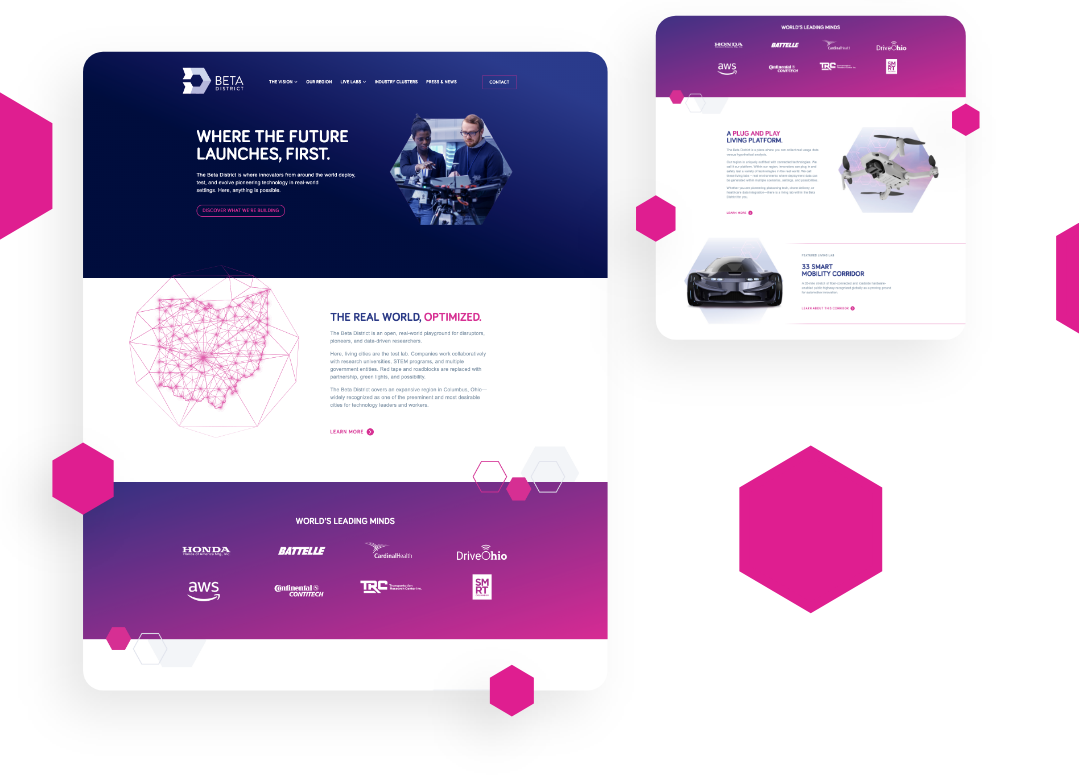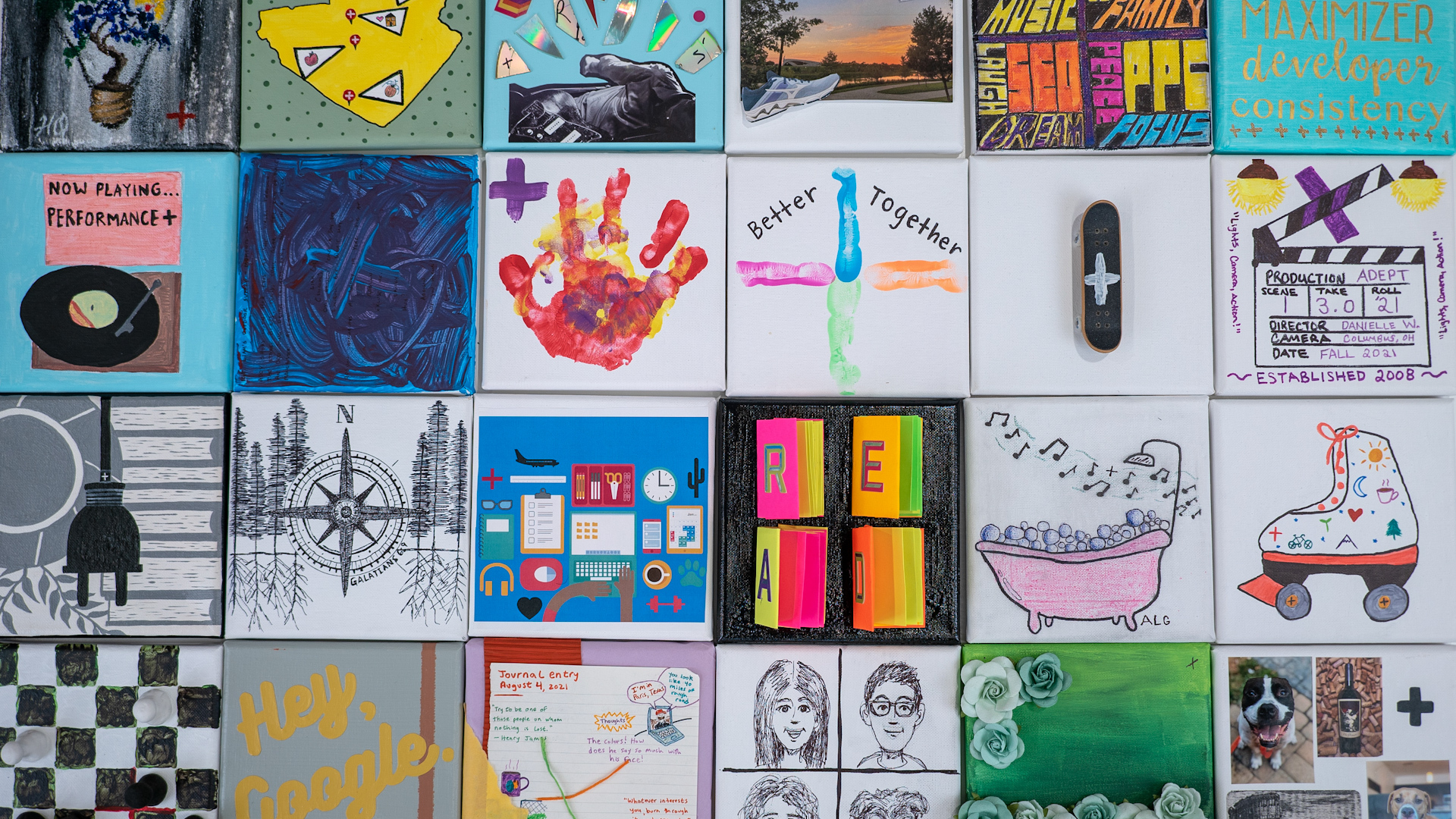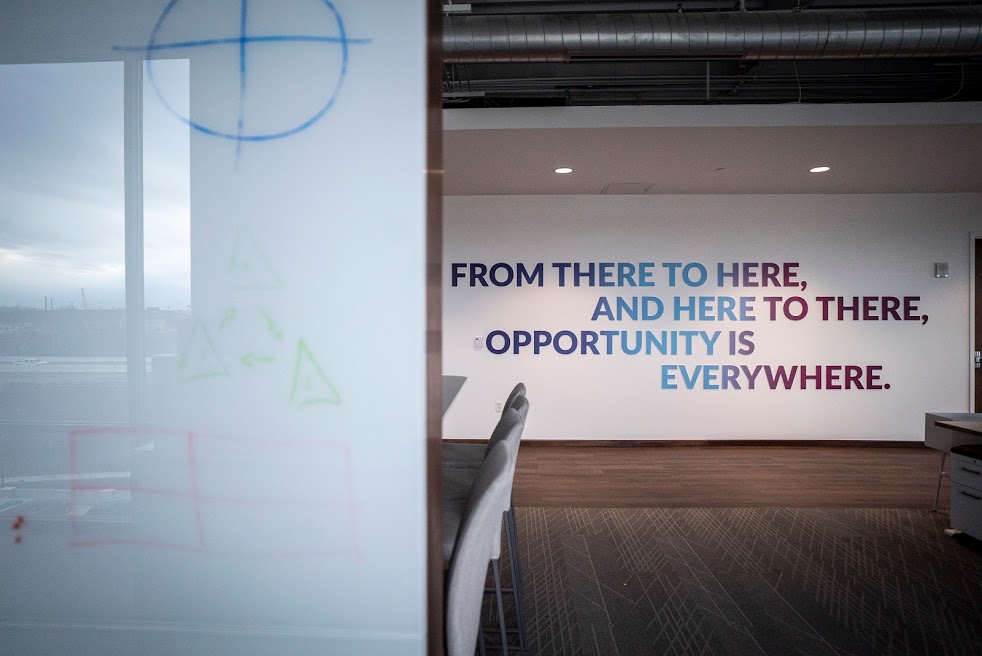Q&A with The Beta District Leadership
How customer insights allowed Adept to create a bold new strategy and brand.
Three municipalities in central Ohio—Dublin, Marysville, and Union County—are connected by a 35-mile stretch of highway called the 33 Smart Mobility Corridor. What makes this stretch of road "smart" is that it features 432 strands of fiber and roadside technology. With everything in place, The Council of Governments (COG) responsible for the management and development of the region tasked Adept with creating a single brand that would drive economic development into their respective territories.
Before moving into the concept phase, Adept conducted extensive customer research. The goal was to understand the types of businesses and influencers who would find the region an ideal platform for their R&D programs, big ideas, and world-changing technology ventures. This customer-first approach allowed us to uncover what mattered to the people we wanted to attract to the region. Beyond infrastructure and assets, what did they want and need? In addition to technology, we discovered they wanted collaboration they couldn't find anywhere else, unique resources, and talent to help them succeed and business advantages.
We then blended those customer insights with competitive research to uncover the essence of what makes the region unique, compelling and relevant to the people the COG wanted to attract. We uncovered a goldmine.
- Real-world connected platform: Roads and intersections that are online and equipped with technology to communicate with vehicles, allowing testers to seamlessly transition between a variety of scenarios, like city-to-urban settings and changing weather conditions.
- Ecosystem of collaboration: Multiple government agencies working together to accelerate innovation and remove red tape. This isn’t found anywhere else.
- Industry trifecta: Business, academia and government working together, instead of one entity taking the lead.
- Strong industry co-horts: Automotive, mobility, manufacturing, healthcare, aviation and insurance all exist in the region. People in R&D like to cluster together.
Thus, The Beta District was born. A place where the future is launched, tested and proven every single day. "Beta" is a call to the type of engineering and tech-driven companies the COG wants to attract. "District" is a reminder that we are together building a region that will continue to evolve to meet the demands of the businesses we seek to empower. There was no template for this type of solution. The region is truly unique in its offer, requiring new creativity and data to discover the idea and convey it to stakeholders.
The pitch process involved team presentations to the board in town hall-style meetings with community members. While The Beta District concept was initially met with skepticism from the board, customer insights helped tie our choices back to the importance of speaking to the end-user. In the end, we won the trust of the board by illustrating that The Beta District concept is rooted in a customer-first approach.
This past winter, we launched The Beta District website, allowing people to see and understand the incredible opportunities that await. The work inspired a collective of council members to think outside of their respective communities and embrace their customers' needs. Two of those council members, Terry Emery, City Manager of Marysville, and Dana McDaniel, City Manager of Dublin, sat down with us to revisit the creation of The Beta District and the future of this high-potential region.
What is the vision of the region and what do you hope happens here?
Dana: We're fortunate to have a lot of different industry clusters here in the district. We have automotive, healthcare, academia, finance and more. The common thread through all of those is technology. We want to be the place where technology thrives and where people come and say, "Hey, this is the place you have to be."
Why was it necessary to give the region a name and identity?
Dana: Early on in this process, it seemed like everyone had an innovation corridor or an innovation district. We felt like we needed to have some kind of different identity than just an innovation corridor. The influence for me was a lot of benchmarking work with other innovation parks, like Research Triangle Park. Then you have Silicon Valley. There's an intuitive understanding of what it is and where it is. I like The Beta District concept because it's not tied to a stretch of road or a particular thing. We hope that people will know us as the place where you can innovate over time because we have the infrastructure and the talent. So the identity for the district had to be something bigger than just an innovation corridor.
What was your initial reaction to The Beta District brand?
Terry: You know, I was trying to absorb it and determine what all the Beta concept entails. The more I researched and looked into it, I thought, "This is right." There's unlimited potential for what we can do. I think if this Council of Governments continues to progress the way I think they will, in five to 10 years from now, everyone will see the district's unlimited potential.
Dana: I really liked it from the beginning, and maybe I was one of the few. But I supported the concept of something more than just common vernacular. I wanted it to be something bigger. We came together at the end, but it wasn't easy to get there. But we all came to an understanding with each other about the boldness of the future and what we needed to do to be bold about it. The brand is different, but it's bold. And I think that's what we're trying to do.

The unlimited potential the district offers is reflected in the bold, future-forward messaging and design featured on the website and in ad concepts.


Did hearing customer perspectives help the council agree to this new, bold direction?
Terry: Absolutely. We had gotten into a little bit of tunnel vision on what we'd been working on. So that really allowed our minds to get out of that sole direction we were focused on. And I think once we got people thinking along those lines, the support started building for exactly what had been brought forward.
What does the future hold for The Beta District?
Terry: I'm hoping that we branch out into other areas, whether it's collaborating on types of development that are occurring in the area, connectivity on trail development, or advancing our technology on connected and autonomous vehicles. We can do so much by collaborating with the entities that are a part of our district that the sky's the limit.
To learn more about The Beta District's vision, visit the website:

